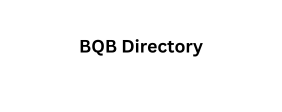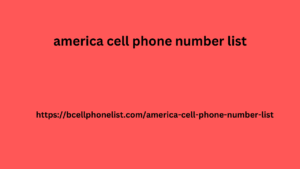When it comes to online social channels, the choice is now so varied that it can embarrass even the most experienced. In this article, we will try to narrow down the field and talk about two of the most important ones both in terms of flows and registered users: LinkedIn and Facebook .
Which one should you focus your efforts on?
Let’s analyze together the pros and cons of each of the two social platforms.
LinkedIn vs. Facebook
Although it started out as a recruiting platform, LinkedIn has evolved into a social media platform similar to the other big ones, complete with blogging tools, private messaging, and status updates. In fact, it’s also the best when it comes to quality content and attracting new audiences .
Facebook , on the other hand, was designed specifically for sharing and communicating. However, the platform is also widely used for consumers to discover new products and brands .
A valuable tool common to both social networks is certainly that of groups, which allows different people to come together based on common interests.
Numbers in hand, Facebook is the clear winner
When it comes to numbers, Facebook really seems to have no rivals with its 2.5 billion monthly active users (MAU) from all over the world versus LinkedIn ‘s 875 million .
On both platforms, the most popular age group appears to be between 25 and 34, according to 2021 data from Statista. However, here too, Facebook wins thanks to a wider range of users with 10% under 18 or over 64. This is easily understandable given LinkedIn’s target audience, which is mainly made up of workers.
According to a 2020 HubSpot research, the highest results in terms of return on investment are achieved on Facebook while LinkedIn ranks fourth out of eight positions.
LinkedIn is the best B2B social platform
The reasons why LinkedIn is an excellent platform for B2B communication for companies are quite clear:
It is easy to identify key decision-makers and subsequently reach them with advertising strategies
Social selling strategies are integrated into the platform
Networking is easier since the platform was created exactly for this purpose
Facebook definitely works best for brands that want to reach consumers directly. Plus, it’s a great place to build and build brand awareness and engage new customers.
Read also ” Does it make sense to advertise on LinkedIn? How to do it? Here are the answers ”
Thanks to our mobile database, businesses may effortlessly connect with potential customers through mobile communication. Companies america cell phone number list may use our extensive database of up-to-date cellphone numbers to increase outreach, engagement, and conversion rates. The ability to reach a wider audience through tailored campaigns not only maximizes marketing efficiency but also promotes growth and profitability.
Thought leadership strategies work best organically on LinkedIn
The role of a thought leader is to japan whatsapp number powder educate, encourage conversation, and drive action. Strategies based on this technique go a long way in generating leads and brand awareness by increasing traffic, mentions, subscribers, and more.
When it comes to thought leadership b2b reviews articles , LinkedIn is definitely one step ahead. The platform is natively designed to converse with businesses. Therefore, brands can be more successful in this regard than on Facebook.
In short:
Facebook Pros -> Huge user base, proven ROI
Cons of Facebook -> not the best choice for B2B marketing
Pros of LinkedIn -> business driven platform , tools for social selling and networking, great opportunities for thought leadership
Cons of LinkedIn -> smaller user base
LinkedIn Groups vs. Facebook Groups
As mentioned above, groups are a feature present on both Facebook and LinkedIn. However, their purposes are slightly different. Just think about the ecosystem in which to contextualize them. In LinkedIn groups, it is more likely that the interests common to the participants are related to work , on the contrary, on Facebook it is much more plausible that users aggregate in the same groups on metrics related to interests outside of work, from lifestyle to food, passing through politics and hobbies.
Keeping this subtle difference in mind can be extremely helpful depending on the product or service you want to promote. If you are promoting, for example, an affordable blender, it is much more reasonable to opt for Facebook groups. On the contrary, if you want to promote service packages designed for professionals, LinkedIn groups will be the perfect place to find your audience.
LinkedIn Ads vs. Facebook Ads
In terms of performance, both platforms now have powerful tools accessible thanks to increasingly intuitive and user-friendly configurations. Among the tools you can count on for both are canvas, carousels, videos and much more.
Now let’s get to the juicy part:
people. Yes, with Facebook you have the possibility to reach more people. However, this does not mean that LinkedIn does not have powerful tools for targeting. In fact, on both you can target your users based on various parameters such as education, job, company, location, age and more.
If you want to learn more about LinkedIn ads and how to use them in B2B marketing, read our dedicated article.
On personal information Facebook will let you dig a little deeper thanks to the large amount of data that users spontaneously provide such as milestones, geolocations, birthdays and more. The final aspect to consider is the cost. Generally speaking Facebook Ads cost less , just think that the average cost per click of LinkedIn is about €4.50 against the €0.80 of Facebook.
Who wins? You decide!
While they share many tools and features, the real differentiator between these two channels, as we’ve seen, is their audience. So, which one is best for your strategy depends entirely on the audience you’re targeting in your specific case.
However, it is important to note that you do not have to choose. In fact, a great strategy is always to integrate, rather than choose and exclude. You can, for example, use LinkedIn for a well-targeted lead generation campaign , and at the same time use Facebook to increase brand awareness and acquire new customers .


